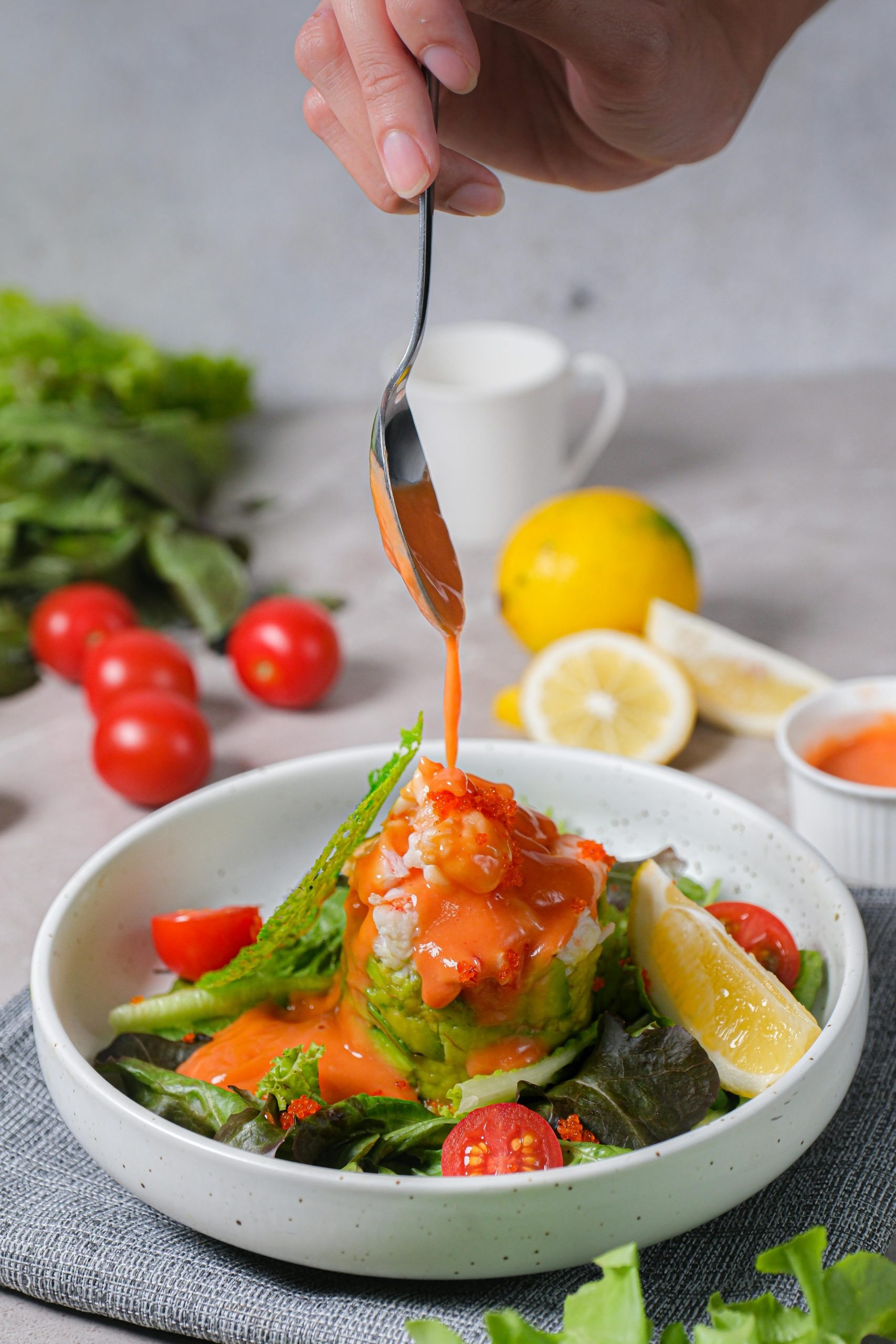Salads often wear a “health halo,” seen as the virtuous choice for a light lunch or dinner. However, the dressing you choose can quickly sabotage those good intentions, loading your greens with hidden calories, unhealthy fats, excessive sodium, and surprising amounts of sugar. In some cases, a seemingly innocent salad dressing can rival or even exceed the unhealthy nutritional profile of certain fast-food items. Here are five types of popular bottled salad dressings that warrant a closer look and might be doing your healthy meal a disservice.

Image Source: Pexels
1. Creamy Ranch Dressings
Classic Ranch is arguably America’s favorite dressing, but traditional bottled versions are often nutritional nightmares. Typically made with buttermilk, mayonnaise, or sour cream, and soybean or canola oil, they are high in calories (often 100-150+ per 2 tablespoons) and saturated fat. Many also contain significant sodium (250- 400 mg+ per serving) and sometimes added sugars or MSG. A heavy pour of creamy ranch can easily add more calories and fat than a small order of fast-food fries. Variations like Cheddar Bacon Ranch are often even worse.
2. Thick Blue Cheese Dressings
Similar to Ranch, creamy Blue Cheese dressings rely on a base of mayonnaise, buttermilk, or sour cream, plus calorie-dense blue cheese crumbles. This results in high calorie counts (often 130-160+ per 2 tablespoons) and significant amounts of saturated fat (2.5- 3.5 g+ per serving). Sodium levels can also be high. While delicious, the rich ingredients mean this dressing should be used sparingly, as a typical serving can pack a caloric punch similar to some fast-food dipping sauces or even small burgers.
3. Sweet French or Catalina Dressings
These bright orange dressings get their color and flavor from a base that often includes oil, vinegar, tomato paste, and a lot of sugar, frequently in the form of high fructose corn syrup. Some popular brands contain 8-10 grams of sugar per 2-tablespoon serving. That’s equivalent to about two teaspoons of sugar, turning your healthy salad into a surprisingly sweet dish and contributing significantly to your daily added sugar intake, potentially more sugar than found in some fast-food desserts or sweetened beverages.
4. Thousand Island Dressings
This classic creamy dressing, often mayonnaise-based with additions like relish, ketchup, and spices, can be another calorie, fat, and sugar trap. Many bottled versions contain 100-140 calories, 10-13 grams of fat, and 4-6 grams of sugar per 2-tablespoon serving, often with high sodium content as well (around 300mg). Its nutritional profile can be comparable to the special sauces found on many fast-food burgers.
5. Certain “Light” or “Fat-Free” Vinaigrettes/Dressings

Image Source: Pexels
Counterintuitively, some “light” or “fat-free” options aren’t necessarily healthier. To compensate for the lack of fat (which provides flavor and mouthfeel), manufacturers often load these dressings with extra sugar, sodium, artificial sweeteners, thickeners, and other additives. A fat-free honey dijon or raspberry vinaigrette might seem virtuous, but checking the label could reveal high sugar content (sometimes 5-10g per serving) or excessive sodium (300 mg+), potentially undermining your health goals more than a small amount of a dressing made with healthy fats like olive oil.
Read the Label Carefully
The nutritional quality of bottled salad dressings varies wildly. Creamy dressings like Ranch and Blue Cheese are typically high in calories and saturated fat. Sweet dressings like French or Thousand Island can be packed with added sugars, often from corn syrup. Even “light” options can be loaded with sodium or sugar to make up for missing fat. To make a healthier choice, always read the nutrition facts panel and ingredient list. Look for dressings with:
- Fewer calories (ideally under 100 per 2 tbsp).
- Lower saturated fat (under 1.5g per serving).
- Minimal added sugar (ideally under 2-3g per serving).
- Lower sodium (under 200mg per serving).
- A short ingredient list featuring healthy oils like olive or avocado oil
- Often, a simple homemade vinaigrette with oil, vinegar, and herbs is the best way to control exactly what goes on your salad. Don’t let a dressing drown out the benefits of your healthy greens.
Read More
9 Grocery Items You Thought Were Healthy But Are Actually Just Clever Marketing
Fast Food Salads Are Worse Than Burgers—Here’s the Shocking Nutrition Truth


